Machine learning on tiny IoT devices based on microcontroller units (MCUs) is appealing but challenging: the memory of microcontrollers is 2-3 orders of magnitude smaller than mobile phones. We propose MCUNet, a framework that jointly designs the efficient neural architecture (TinyNAS) and the lightweight inference engine (TinyEngine), enabling ImageNet-scale inference on microcontrollers.TinyNAS adopts a two-stage neural architecture search approach that first optimizes the search space to fit the resource constraints, then specializes the network architecture in the optimized search space. TinyNAS can automatically handle diverse constraints (i.e. device, latency, energy, memory) under low search costs. TinyNAS is co-designed with TinyEngine, a memory-efficient inference library to expand the search space and fit a larger model. TinyEngine adapts the memory scheduling according to the overall network topology rather than layer-wise optimization, reducing the memory usage by 3.4x, and accelerating the inference by 1.7-3.3x compared to TF-Lite Micro and CMSIS-NN. MCUNet is the first to achieve>70% ImageNet top1 accuracy on an off-the-shelf commercial microcontroller, using 3.5x less SRAM and 5.7x less Flash compared to quantized MobileNetV2 and ResNet-18. On visual and audio wake words tasks, MCUNet achieves state-of-the-art accuracy and runs 2.4-3.4x faster than MobileNetV2 and ProxylessNAS-based solutions with 3.7-4.1x smaller peak SRAM. Our study suggests that the era of always-on tiny machine learning on IoT devices has arrived.
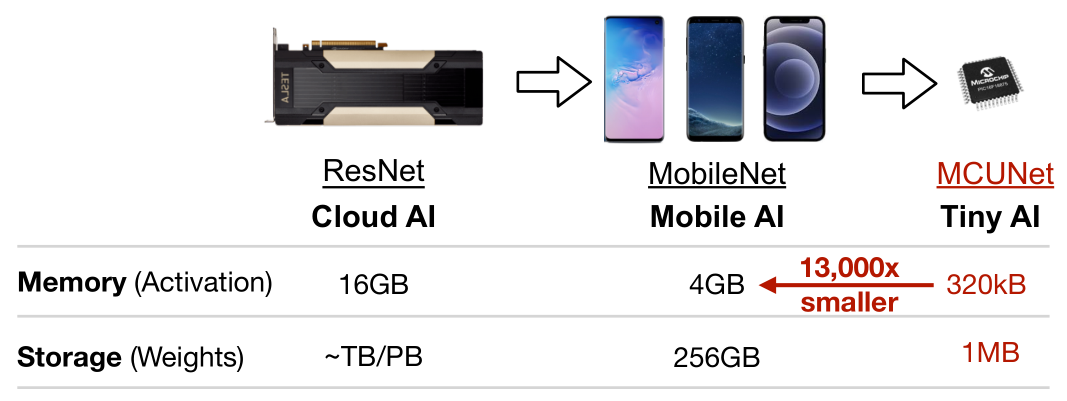
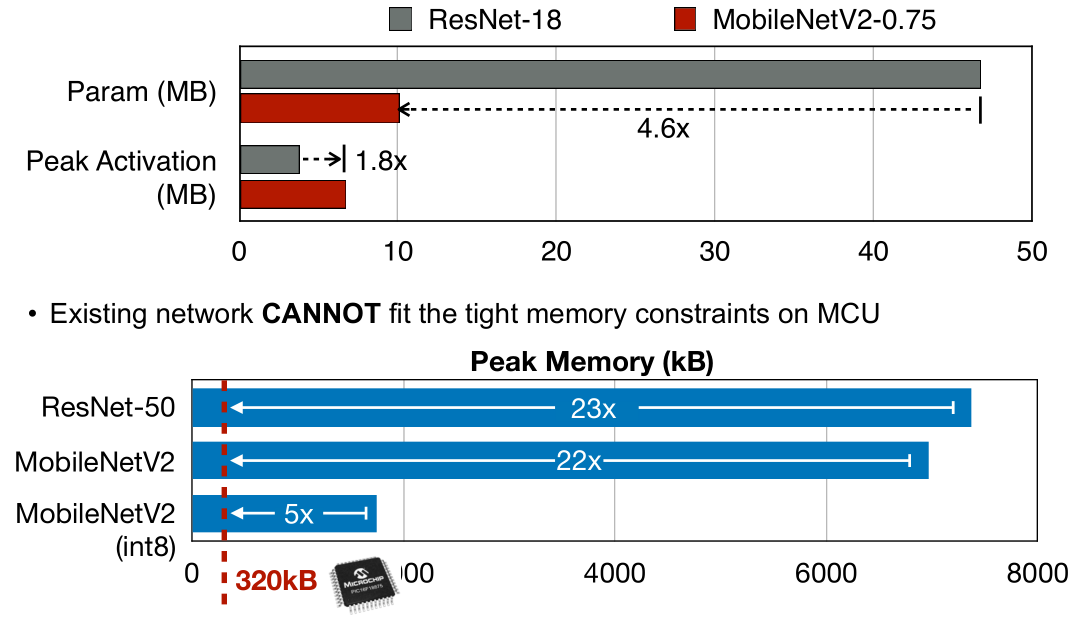
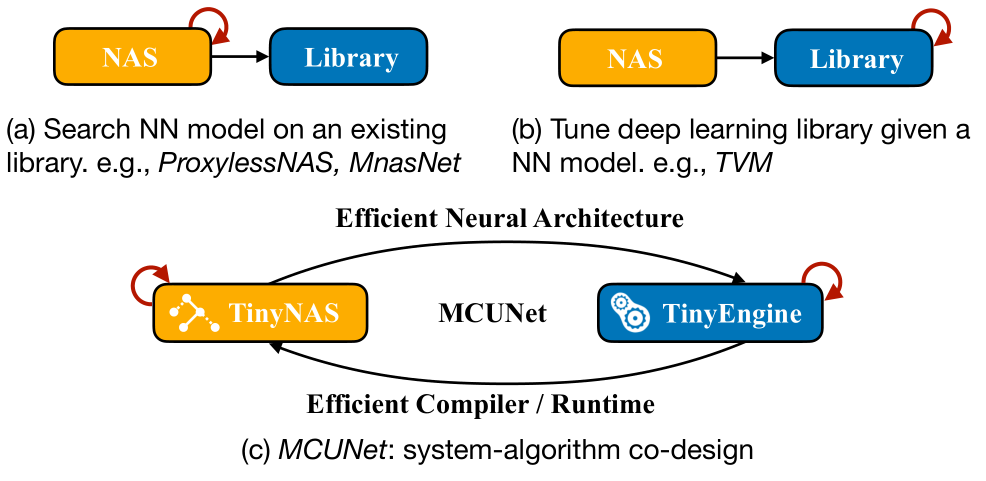
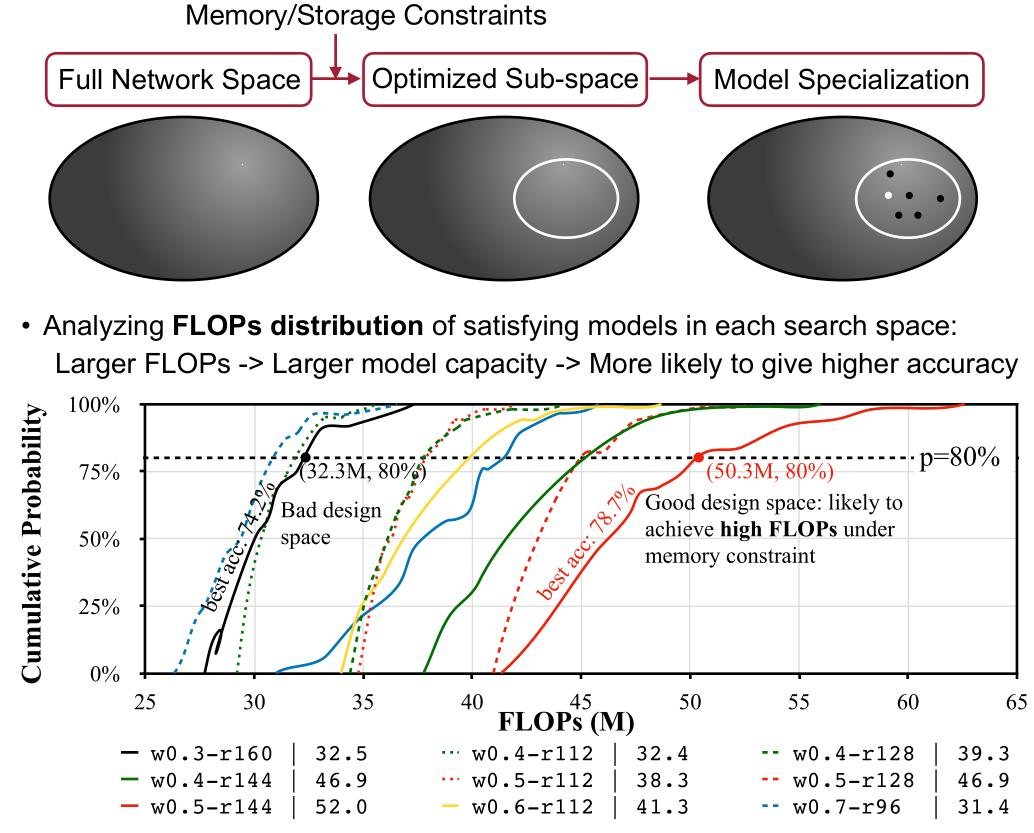
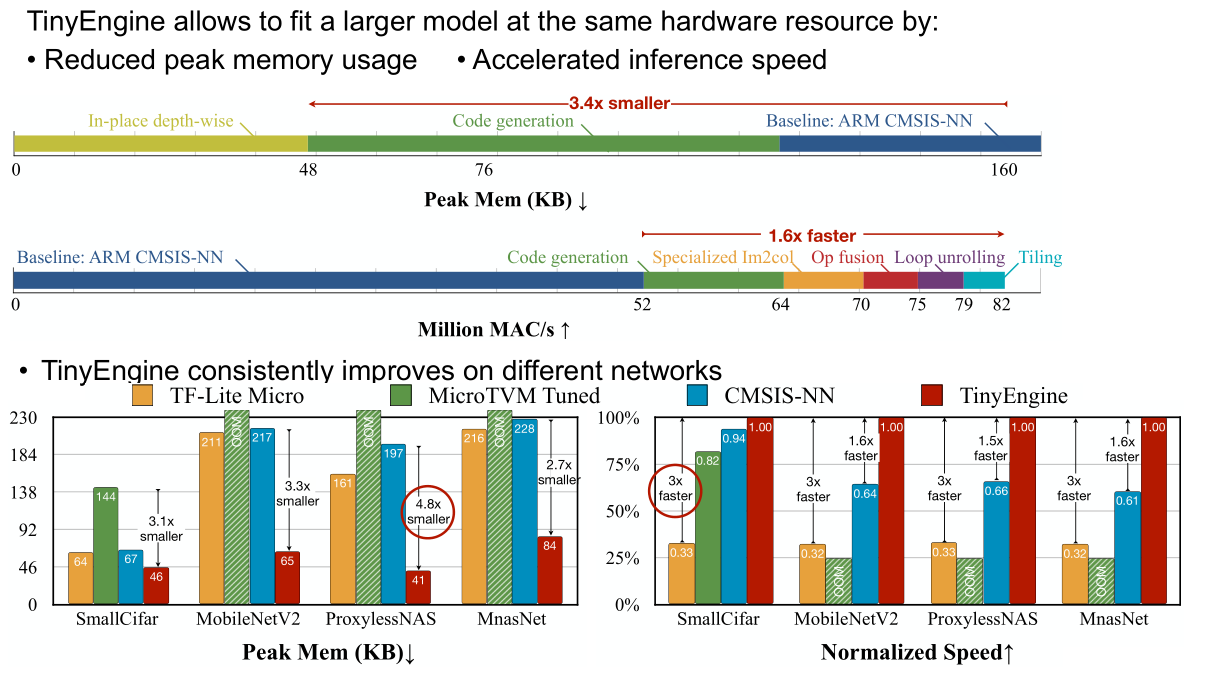
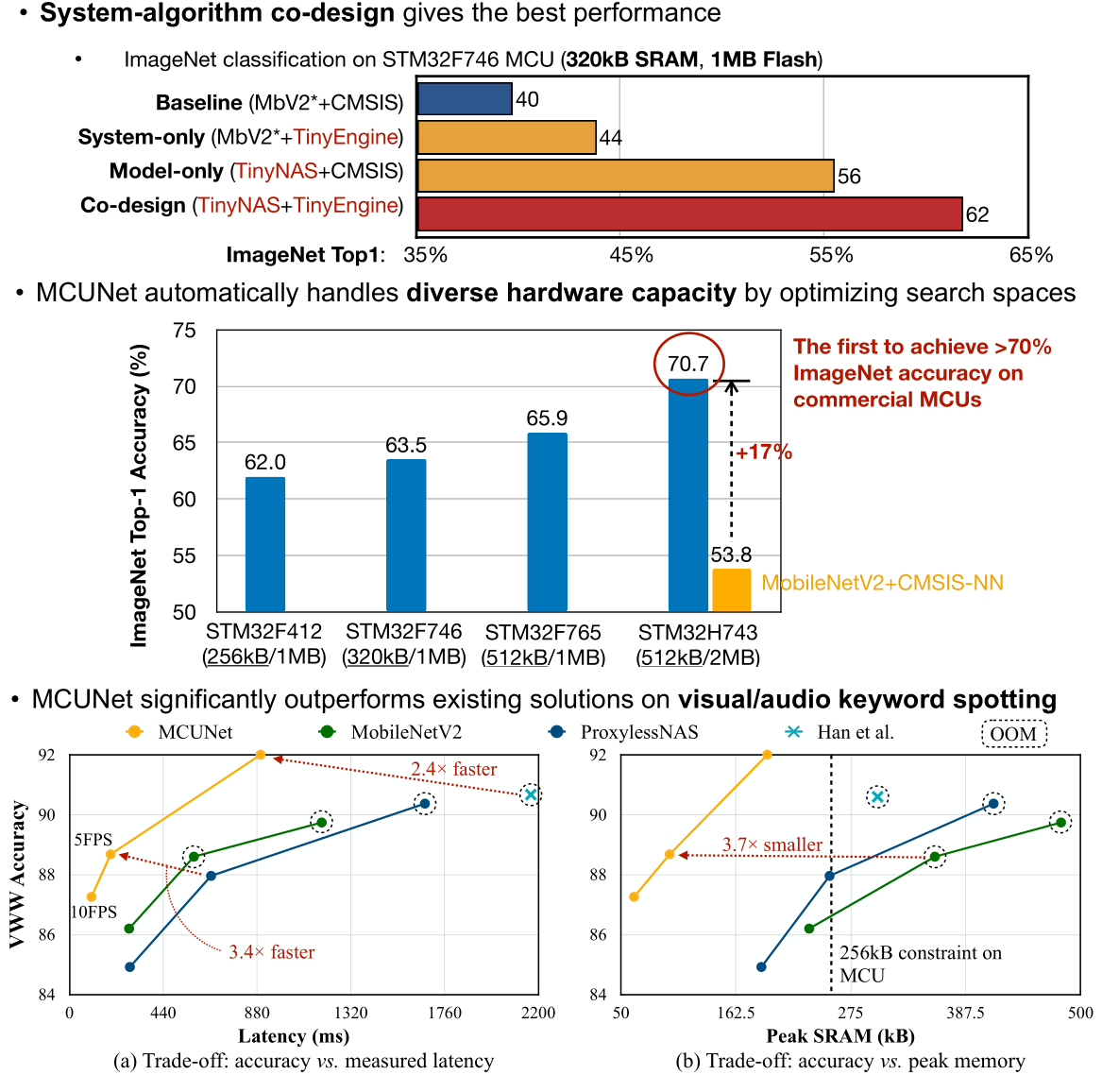
@article{lin2020mcunet,
title={Mcunet: Tiny deep learning on iot devices},
author={Lin, Ji and Chen, Wei-Ming and Lin, Yujun and Gan, Chuang and Han, Song},
journal={Advances in Neural Information Processing Systems},
volume={33},
year={2020}
}
We thank MIT Satori cluster for providing the computation resource. We thank MIT-IBM Watson AILab, Qualcomm, NSF CAREER Award #1943349 and NSF RAPID Award #2027266 for supporting this research.